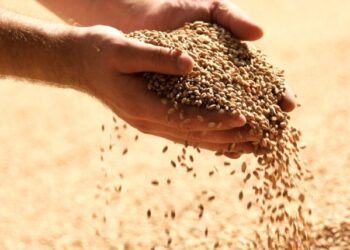The endemicity of various flowers in my lawn can deliver the passport of our state-of-the-art Prime Minister, Narendra Modi, awful inferiority complicated. The locations of the foundation or the biogeography of the specific plant vegetation and ornamentals we typically
see around us is so various and alien that lots of us may not have an inkling about it.
Our maximum widely fed on the beverage, coffee, is endemic to the Ethiopian Highlands of Africa. Also from Africa are yams and watermelon, at the same time as tea, citrus fruits, coconut, and mango originate from Southeast Asia. Pineapples, avocados, amaranth, papaya, corn, quinoa, and sweet potatoes are from the Tropical Americas. Cabbage and lettuce are from Europe. Olives, sage, grapes, and rosemary are from the Mediterranean, and wheat and oats are from Central Asia. The breadfruit is native to the tropical Pacific Islands, and so the listing is going on.
Such is the diversity of the origins of our meals that we will be having the whole world on our dining table tonight. Plants with such varied origins of cultivation have come together as ingenious dishes, shaping our food regimen and tradition. Wherever human beings have traveled, they have carried seeds and cultivated them, and along with the. They’ve introduced in more recent seeds, which cater to their gustatory and calorific wishes in thrilling approaches.
Take, as an example, potatoes which can be endemic to the Andes. Tomatoes, peanuts, pumpkin, and chilies have come from Central and South America. Turmeric and pepper are from the Western Ghats of India, whilst toor dal, brinjal, and curry leaves are from peninsular India, nutmeg is from the Moluccas of Indonesia, and the famous person anise is an idea to have originated from southwestern China.
All of the above-noted vegetation shapes a part of India’s maximum extensively known and eaten dish, the sambhar, that is quintessentially a South Indian dish, and yet includes such a lot of non-native elements.
Historians believe that chilies, potatoes, and tomatoes got here with the Portuguese, 500 years in the past, with the aid of which era that they had already installed colonies in South America. One
can say that those no longer-so-Indian ingredients are relics of that cultural change, a time when all of us wanted to set up trade with India. Other non-native plant life may also have arrived similarly in the course of various factors within the timeline of the lengthy, colorful history of our land. This kind of botanical and cultural exchange has occurred each time people of different communities, nationalities, or ethnicities have met, all around the world, at some point of different points in time.
But observe the methods in which we have included these into our cuisine and cultural fabric. Chilies, tomatoes, and potatoes shape the most typically used substances in our Indian cuisine, and so popular are they in our recipes that it’s hard to imagine Indian food with out these components.
Likewise, can you imagine rasam without chilies and tomatoes, or the subtleties of the Mughlai delicacies without bay leaf and big-name anise? Such is the ingenuity of our human beings that those multitudes of substances with their exclusive regions of foundation, used in varied proportions, bureaucracy, and strategies, shape a part of the sheer type of dishes in our Indian delicacies, which have also come to mirror the socio-cultural and biogeographical diversity of our amazing state. Each dish, with the aid of itself,, is a unique aspect of the region of its
origin, capturing the essence of the land, records, and spirituality, tantalizing our flavor buds and satiating our hunger and yearning. Yet we continue to be oblivious to the foreignness of those elements. But we do no longer see why it needs to count whilst the whole thing is in concord in our dish.
This terrific party of our delicacies is happening as we speak. Flip your TV channel and you will see innumerable ads and meal programs on masala oats, quinoa upma, paneer pizza, chocolate burfi, and whatnot. Food experiments are yielding sinful dishes as meals are crossing borders. This is the best of instances for the joys-looking for, knowledgeable, conscious glutton. Food by no means tasted so proper, and we are spoilt for preference.
This makes me wonder how the sambhar of the pre-colonial era tasted. Prepared with just the local substances. Maybe there was no sambhar then. It might be a query for the historians and sambhar connoisseurs available, but it makes me wonder approximately the evolution of our food.








